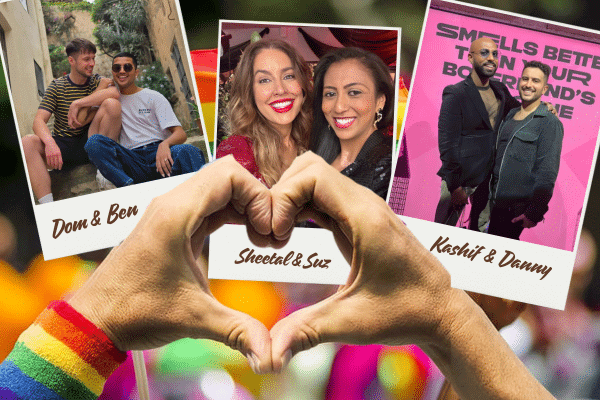Love is universal. It knows no borders, no labels, and no rules. As Sydney gears up for its annual Mardi Gras celebrations – a celebration of love in all its forms, many South Asians find visibility and representation in queer spaces are still evolving. Stories like these are powerful reminders that love, in all its beauty and resilience, deserves to be seen, heard, and celebrated. As Mardi Gras paints the city in rainbow hues, let’s remember that love – South Asian, queer, and unapologetically proud—has always existed and will continue to thrive.
Love is love. Always. indian LGBTQ in australia
Dominic & Ben
Dom and Ben met on Tinder, with Dom initially thinking Ben was “too good to be real.” What started as casual dating soon turned into something deeper, and after a year, they officially committed to each other and have been together for almost 8 years.
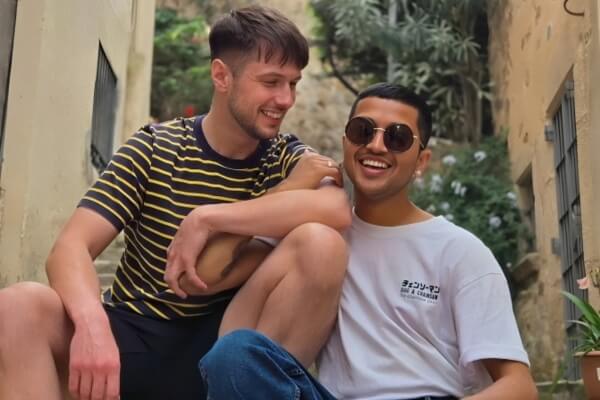
What does love look like for you?
Dom sees love in Ben’s generosity, kindness, and unwavering care – especially during difficult times. “After my recent surgery, I was in a vulnerable situation, and Ben really showed how much he loves me. He was so caring and kind. It’s these things that you would expect a partner that truly loves you to do, and I think that’s what love is for me.”
Ben, on the other hand, values how much he learns from Dom every day. “This has been my most serious relationship and I think what’s come out of it the most is the deeper understanding of each other and really just learning together.”
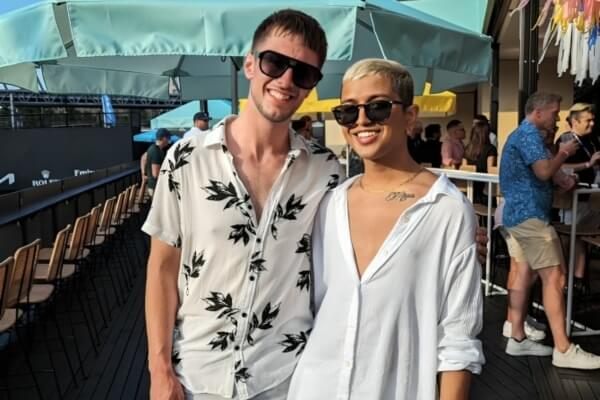
The hardest part?
For Dom, family acceptance was initially difficult. “Certain people in my family didn’t understand what a queer relationship could look like. Ben was often referred to as ‘my friend.’ My grandmother fully accepted Ben from the start, no explanation needed. People need to understand that this is not something you’re familiar with and this may not be something you see every day, but it exists. Queer people often find themselves doing that.”
Ben acknowledges that queer relationships often come with external challenges. “Across all queerness, acceptance is a challenge. We’re not here to change anyone else’s views, but we’re here to show that this is our love, and this is who we are. That’s really the hardest thing, challenging and understanding other people’s views.”
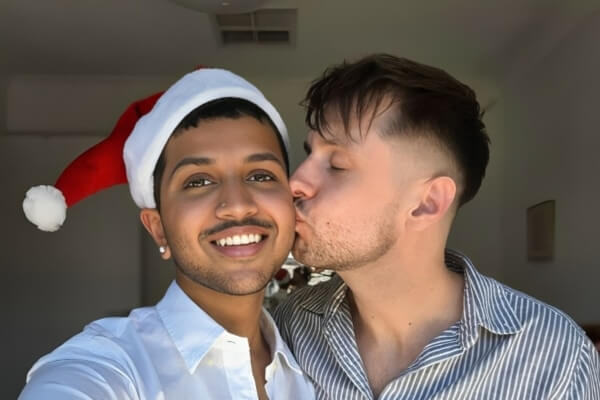
Advice for young queer people?
Love requires learning and compromise. “We think that you really need to be true to who you are and not try and fit in a box when you’re out there because even though we started dating eight years ago, it was still challenging back then. It really comes down to not rushing it, taking the time.” indian LGBTQ in australia
Kashif & Daniel
Kashif and Danny also met on a dating app, a story familiar to many queer couples. Their first date wasn’t just about small talk; they dove straight into deep discussions on faith, family, and their future. They’ve been together for almost two years.
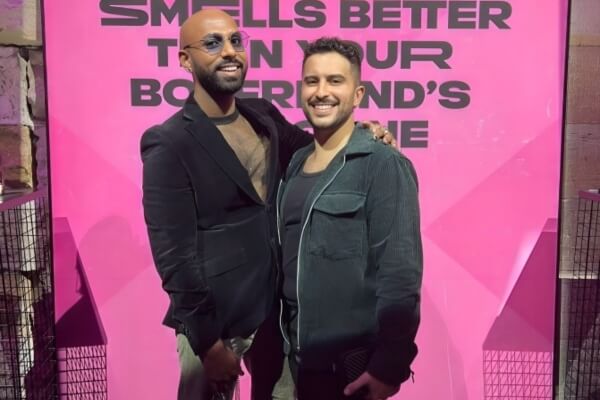
What does love look like for you?
Kashif describes love as the small, everyday affirmations that remind him Danny is his person. “For a long time, I was fantasising that my love was going to be like Sridevi and Rishi Kapoor in Chandni, or Shah Rukh Khan and Kajol in DDLJ. But now in my late thirties, I realised love was not by any means the definition I had in mind. Two years on, every single day, something tells me that he’s a beautiful person in my life, and I love him so much.”
For Danny, love is about vulnerability. “To let someone see you fully is a risk, especially for gay men who haven’t always experienced full acceptance from family and community. I think love has to be practical and it requires negotiation. It’s about also being vulnerable.”
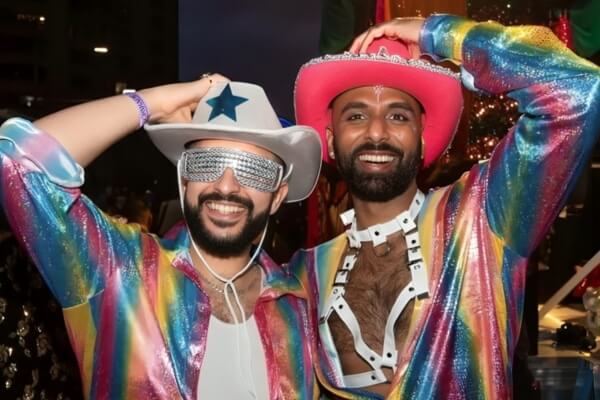
The hardest part?
For Kashif, navigating cultural expectations and community pressures remains a challenge. “I have three sisters who are already married. They share their lovely, beautiful, straight, married lives on WhatsApp groups for the family and I don’t get to do that because if I do, it may rub people off in certain ways. So I keep it very personal. We have to be cautious about what we share because there is still a lot of stigma around queer relationships.”
Danny highlights the importance of unlearning internalised homophobia. “We have to unlearn the stigma and the internalised homophobia. Coming from strong cultural backgrounds, we’ve had to redefine faith and culture in a way that aligns with love, acceptance, and kindness rather than restrictions.”
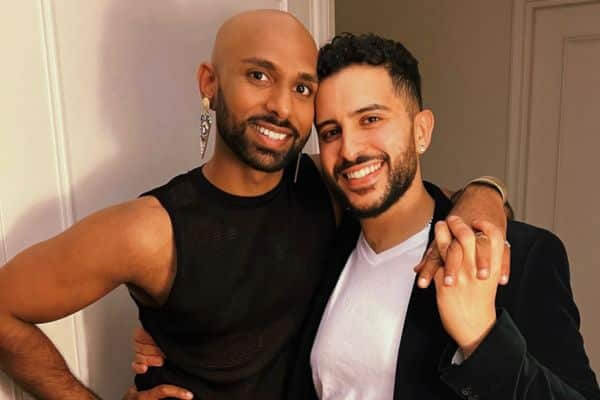
Advice for young queer people?
Like Dom and Ben, Kashif and Danny emphasise communication, growth, and authenticity. “Stay true to who you are and your love. Don’t bend yourself to fit into outdated narratives.” indian LGBTQ in australia
Sheetal & Suz
Suz first reached out to Sheetal after seeing her on TV discussing diversity, equity, and inclusion. At first, Sheetal didn’t think much of it, assuming it was just another friendly note. But everything changed when they started exchanging voice notes; hearing each other’s voice and perspectives on the world, they knew they had to meet. The two got married in late 2024.
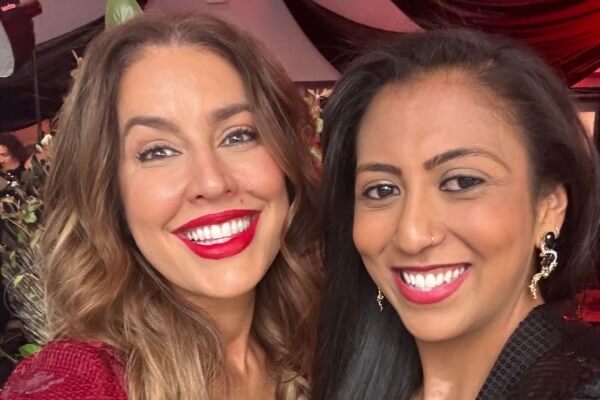
What does love look like for you?
Sheetal grew up with a clear idea of love, shaped by her parents’ arranged marriage. She believed that if two people were committed, they could build a love story after marriage and live happily ever after. But for her, that wasn’t the case. No matter how much she tried to “make it work” with men or other partners, it never did.
That understanding shifted when she met Suz. “When I met Suz, that understanding matured further and I finally felt like I had met a true partner; my partner. She was the perfect fit for me and the only thing I couldn’t do was try to find what couldn’t work!”
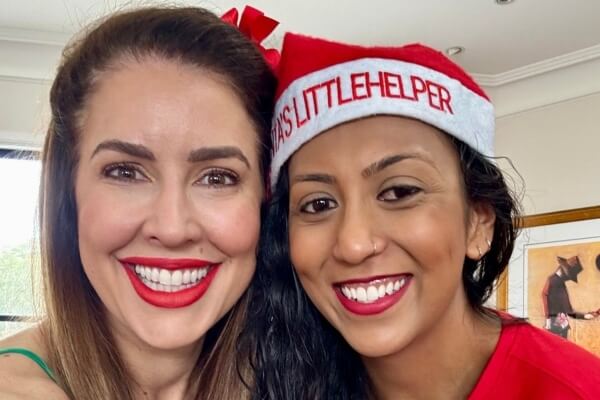
The hardest part?
Despite their deep connection, Suz and Sheetal, like any couple, face misunderstandings and disagreements. “Especially as an interracial couple with different cultural frameworks! But we choose curiosity over suspicion, communication over silence and each other above all.”
As Sheetal began breaking some expectations, the rest seemed to lose their weight – at least to those around her. When she didn’t marry a brown man after her first degree and then crossed 30, the pressures around marriage, children, and career started to fade. And once it became widely known that she was queer, those expectations nearly vanished altogether.
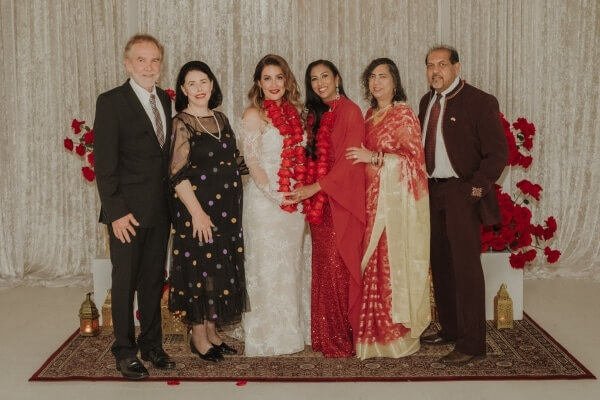
Advice for young queer people?
Sheetal is a big believer in doing what feels right and accepting what happens as a result. “It took me more than 10 years to bring my parents from a place of discomfort to acceptance,” she shares. While that may not be the case for everyone, or a safe option, she acknowledges we need to try and bring our family along and for her, it felt right to do that at the time, or at least try. “And I’m so glad I did.” indian LGBTQ in australia
“Life doesn’t turn out how we expected; we can grieve that and simultaneously appreciate that sometimes it’s better than we imagined – and that’s okay, too,” she reflects.
READ MORE: Alok Vaid-Menon: Comedy, identity, and the politics of being




